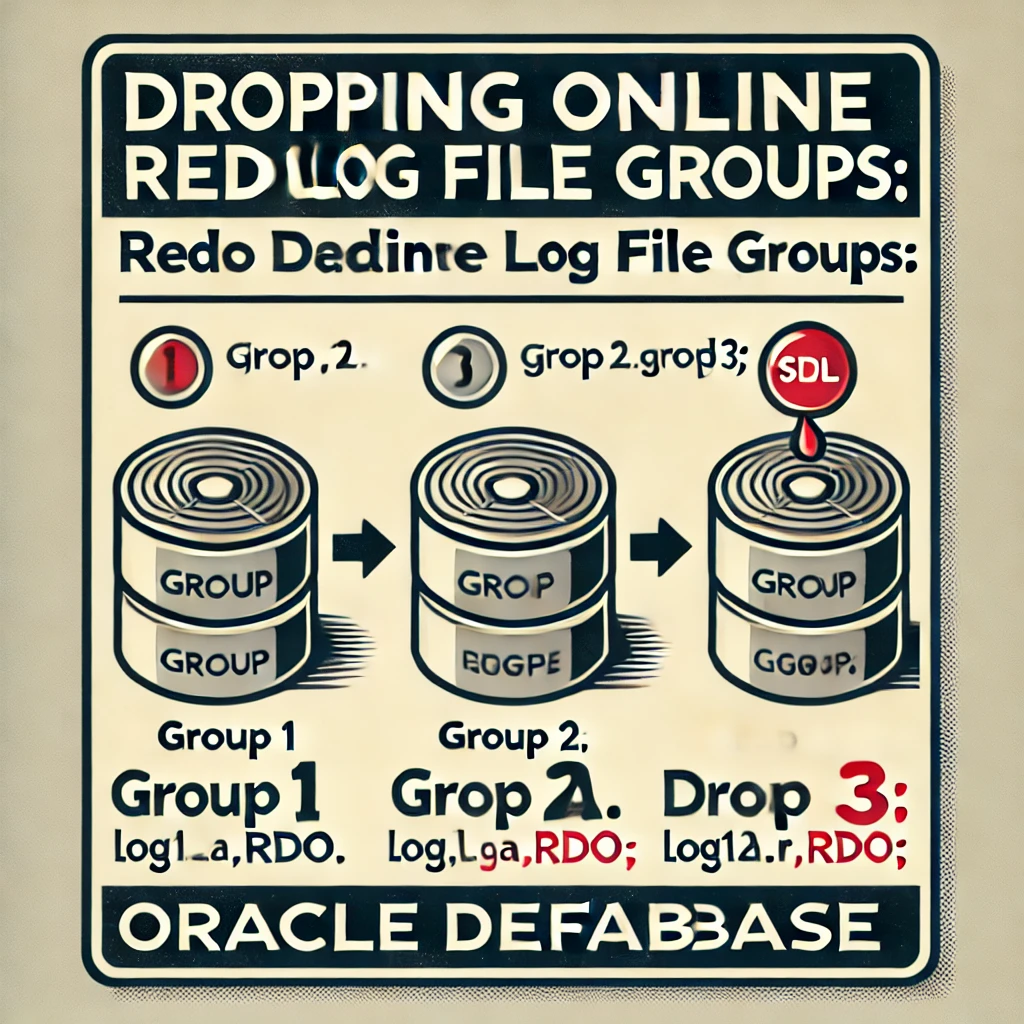Managing redo logs is a critical part of Oracle database administration, particularly for ensuring data integrity and supporting recovery operations. This guide walks you through adding and dropping redo log groups in Oracle, complete with SQL commands and output examples.
Step 1: Review Current Redo Logs
First, take a snapshot of your existing redo logs to understand the current configuration. This step is essential to verify which logs are active, inactive, or in use before making any changes.
SELECT a.group#, b.member, a.status, a.bytes/1024/1024 AS MB
FROM v$log a, v$logfile b
WHERE a.group# = b.group#;
Example Output:
| GROUP# | MEMBER | STATUS | BYTES |
|---|
| 1 | /u02/oradata/afic/REDO01.LOG | CURRENT | 50 MB |
| 2 | /u02/oradata/afic/REDO02.LOG | INACTIVE | 50 MB |
| 3 | /u02/oradata/afic/REDO03.LOG | ACTIVE | 50 MB |
Step 2: Add New Redo Log Groups
To improve data redundancy and performance, add new redo log groups. For this example, we add three new redo log groups, each with a size of 512MB.
ALTER DATABASE ADD LOGFILE GROUP 8 (‘/u02/oradata/afic/redo08.log’, ‘/u01/app/oracle/oradata/redo08a.log’) SIZE 512M;
ALTER DATABASE ADD LOGFILE GROUP 9 (‘/u02/oradata/afic/redo09.log’, ‘/u01/app/oracle/oradata/redo09a.log’) SIZE 512M;
ALTER DATABASE ADD LOGFILE GROUP 10 (‘/u02/oradata/afic/redo10.log’, ‘/u01/app/oracle/oradata/redo10a.log’) SIZE 512M;
These new groups provide additional storage for redo log files, helping to balance the load and reduce log contention.
Step 3: Verify Redo Log Status
After adding the new groups, confirm that they have been created and review their statuses. This helps ensure that your database recognizes the newly added logs and verifies their availability.
SELECT a.group#, b.member, a.status, a.bytes
FROM v$log a, v$logfile b
WHERE a.group# = b.group#;
Example Output:
| GROUP# | MEMBER | STATUS | BYTES |
|---|
| 8 | /u02/oradata/afic/redo08.log | UNUSED | 512 MB |
| 9 | /u02/oradata/afic/redo09.log | UNUSED | 512 MB |
| 10 | /u02/oradata/afic/redo10.log | UNUSED | 512 MB |
The UNUSED status indicates that the redo logs are ready to be used by the database when required.
Step 4: Drop Unneeded Redo Log Groups
If certain redo log groups are no longer needed, you can remove them. Dropping unnecessary logs can help free up resources but requires careful handling to avoid data risks.
Prerequisites for Dropping a Redo Log Group
- Ensure that the group is in an
INACTIVEstate. You cannot drop a redo log group that is currently in use (CURRENTorACTIVE). - Verify that the log has been archived (if archiving is enabled).
Checking Redo Log Group Status
Before dropping, confirm that the group is inactive and archived:
SELECT GROUP#, ARCHIVED, STATUS FROM V$LOG;
Forcing a Log Switch (if necessary)
If the redo log group you want to drop is currently active, force a log switch to make it inactive:
ALTER SYSTEM SWITCH LOGFILE;
Dropping the Redo Log Group
Once confirmed as inactive, drop the group:
ALTER DATABASE DROP LOGFILE GROUP 2;
Summary
By following these steps, you can efficiently manage your redo logs, adding and dropping groups as needed to optimize database performance and ensure data protection. Regularly monitoring and updating redo logs is a best practice for database administration, helping maintain smooth recovery processes and consistent performance.


